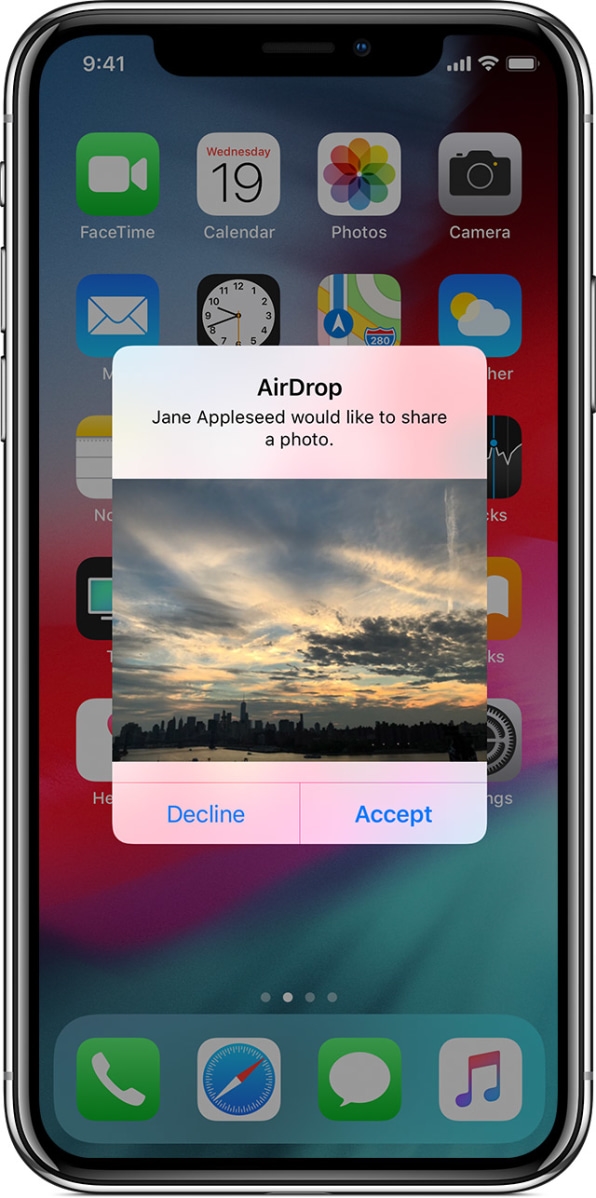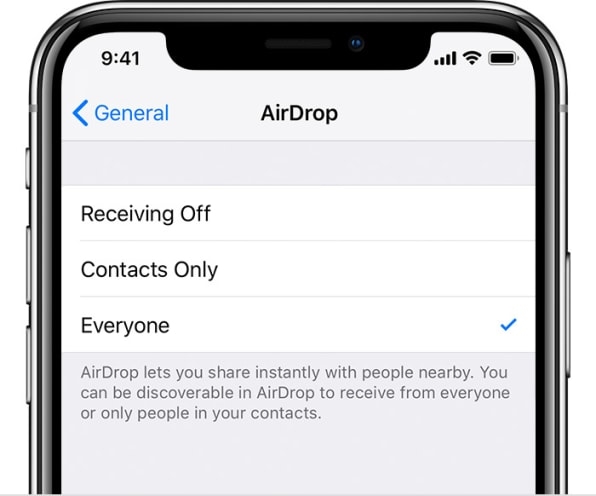Apple has a number of options for fixing a widely reported “cyber flashing” problem that is enabled by the AirDrop feature on the iPhone.

[Source: Apple]
To cite Urban Dictionary’s definition, cyber flashing is the digital equivalent of old-fashioned trenchcoat-style flashing. It happens when some rando detects another iPhone user within 30 feet who has set their AirDrop settings to “Everyone,” then sends them a lewd picture. A notification pops up on the receiver’s phone, and they can accept or reject it. The problem is that they also see a preview image that’s big enough to get the point across of a lewd picture or a threatening statement.
Cyber flashing has become a thing on major metro subway systems. Media reports of the problem began showing up in 2015, but we’ve heard about cases of AirDrop abuse for years. The feature became available on the iPhone in 2011. New York City is now proposing a law that would severely punish people sending lewd pictures to strangers, the New York Times reported today. Here’s my favorite part:
“In the old days, you had to have a long trench coat and good running shoes,” said Councilman Joseph Borelli, a Republican from Staten Island who is co-sponsoring the anti-flashing bill. “Technology has made it significantly easier to be a creep.”
Apple could, if it wanted to, easily fix this problem. Here’s how:
iPhone users can only get cyber flashed by a stranger if they have actively switched their AirDrop settings from “Contacts Only” to “Everyone.” (To check and/or change your Settings you can either go to General > AirDrop or simply look in Control Center and press down on the networking section with bluetooth and cellular to view or change AirDrop settings.)

[Source: Apple]
From Apple’s perspective, the easiest fix is to just remove the preview image from AirDrop notifications for users being asked to receive content from anyone not in their contacts list.
Or it could just remove the “Everyone” setting completely. The setting seems wildly inconsistent with Apple’s almost-obsessive emphasis on privacy. I asked Apple why people switch their setting to “Everyone” but got no reply. I suspect the setting was meant for people who want to be able to quickly send a media file or resume to someone they meet at a party or networking event. (I don’t know anyone who’s actually done that, but who knows.) With the “Everyone” setting removed, the receiver would have to add the sender to their contacts before anything was exchanged.
At the very least, Apple could put a warning in front of the user who switches AirDrop into “Everyone” mode. Something like: “In this mode someone you don’t know in your general vicinity might send you pictures of their genitals.” (Well, Apple could work on the wording.)
Android also has an ad-hoc file-sharing feature, called Android Beam. But it contains a built-in security feature: In order for it to work, the two Android phones have to be placed back to back, so that pretty much rules out receiving unwanted preview images from strangers. (The NFC radios in the two phones also have to be turned on.) Indeed, that might be another possible fix for AirDrop on the iPhone–require that the receiving and sending devices be much closer together. If not physically touching, then maybe at least within a distance of much shorter than 30 feet when in “Everyone” mode.
If Apple would make the above changes, and I suspect they will do at least one of them, the city of New York might not need a cyber-flashing law. For now, at least, lawmakers may be forced to step in.
Apple didn’t immediately respond to a question about whether it’s considering any fixes to this issue.
(35)